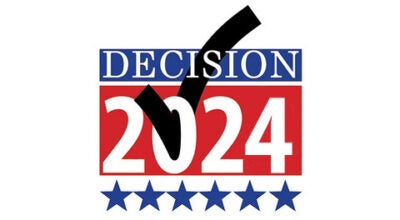The Viewfinder: Millennials help to revive powwow traditions
Published 12:20 am Tuesday, March 27, 2018
Caution tape wrapped around trees at the Grand Village of Natchez Indians directed visitors through the woods to the background sound of beating drums that become louder with every step closer to the center of the Natchez Powwow.
Past the woods was a clearing where a semi-circle of food trucks and craft booths selling items such as jewelry, beadwork and arrowhead spears.
Visitors sat outside the circle on lawn chairs and blankets listening to the master of ceremonies and watching traditional dancing, such as grand entry and intertribal dancing and gourd dance. Specific to Southeastern Native American tribes, the drum is placed in the in the center of the circle and the dancers move clockwise.
Scierra LeGarde, 27, of New Orleans said she has been dancing for seven years and attending powwows all her life. She belongs to the Bayou Lacombe Band of Choctaws and came to participate in Saturday’s 30th annual Natchez Powwow at the Grand Village of the Natchez Indians.
“Indian country is so huge, our traditions are so different,” LeGarde said. “Southeast tradition is way different from up north.”
LeGarde said that when she was growing up they didn’t have a lot of powwows and are now just starting to have them again.
“It’s just like another family reunion for us, a chance to celebrate our culture,” LeGarde said. “That’s why I really like doing this because it reminds us of who we are, and it makes it special.”
She said in the 1980s powwows seemed to be dying out.
Collations of Southeastern tribes such as Southeastern Bands of Choctaw and Cherokee came together in efforts to preserve and renew their culture. Now LeGarde said she has noticed many millennial-aged powwow dancers and said it is one of the reasons so many powwows exist in the Louisiana area.
“A lot of elders are afraid that once they die our culture will be dead, so they were practical enough to make these powwows happen,” LeGarde said. “A lot of people our age (20 somethings) are now dancing again.”
On a personal level, LeGarde said she dances to celebrate her family’s history and enjoys meeting new tribal people from different nations and meeting nonnatives, too.
“Throughout the years we’ve been oppressed a lot, and I’m not trying to single us out,” she said. “A lot of people have been oppressed, but this is now my way of being happy to say yes we’re still here.”
LeGarde’s sister, Ginny Richard, said she returned to dance two years ago after a 15-year hiatus.
Dressed in red regalia, 28-year-old Richard of New Orleans said she remembers coming to Natchez as a child.
“Natchez is a great powwow because it is a dancers’ and singers’ powwow,” she said.
While Richard says the dances are enjoyable there is also a great deal of responsibility.
At a young age Richard said she learned that as a dancer you are an ambassador representing your family and your people and even your style of dance is telling their story.
“Specifically, this dress is a medicine dress,” Richard said. “When we’re dancing, we’re praying for healing for people and for Mother Earth. Every single jingle on here was made with a prayer and when we dance, we’re praying.”
Richard said she asks people if there is anyone they want her to pray for while she dances.
“That’s part of being an ambassador is knowing your responsibility, and your privilege of being able to do these dances. It’s fun but it’s a lot more than that,” Richard said.
Richard said she hopes people come out to the powwows to observe and ask questions about what they are doing.
“A lot of people view what we do as an artifact or remnant from the past,” Richard said. “We’re still here. We still live here. We’re alive and our traditions and our cultures are changing and intermingling just like yours are, and don’t think we’re reenacting. We’re not reenacting. This is who we are and this is what we do, and if you choose to live a native way of life whether you powwow or not, that’s a way of life and just like any other way of life it continues to evolve.”
Saturday’s event marked the 30th year of the Natchez Powwow where Tribes represented include Choctaw, Comanche, Kiowa, Natchez, Otoe, Osage and Ponca.















